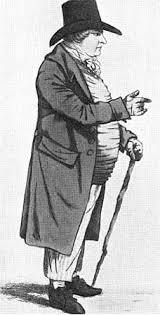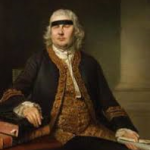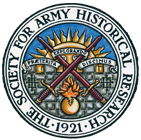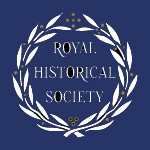The Bow Street Runners and law and order in early nineteenth century London.

In the early nineteenth century London was a lawless city. In fact, it was two cities.
The first city was centred in Westminster and included the Parliamentary Estate and its members of both houses; the seat of government in Downing Street with its Departments of State and the grand houses of the newly-rich built cheek by jowl with the mean and crowded streets inhabited by the poor.
The focus for this chaos were the hundreds of stews concentrated around Covent Garden. These dens, that included the theatre quarter in Haymarket, offered all manner of vice for the affluent classes and attracted every kind of criminal. Gambling and drinking were the two principal activities after dark and although a number of measures had been attempted to contain the trouble that was caused – including a series of Gin Acts to restrict the consumption of spirits – none of these had worked.
The second city was the City of London, the original city of the Romans and the merchants of the medieval craft Guilds. This other city was in the process of becoming the richest place on earth through its trade across the Atlantic Ocean and to India and the East financed by the recently established Bank of England. This city jealously guarded its ancient privileges and made its own arrangements for the security of its private houses, commercial offices and the warehouses that stretched up and down the banks of the Thames.
Here, for many centuries, the constables of the Night Watch, organised by each Parish and on a voluntary basis, had been responsible for keeping the Peace. In this city the main problems were footpads operating at night and the activities of large and well organised gangs working on the river that robbed warehouses and attacked shipping at anchor.
In 1748 Henry Fielding, a lawyer and well-known London playwright, petitioned the Government for action against London’s criminals. Fielding was granted a Commission as Magistrate and Justice of the Peace to deal with law and order in Westminster and set up a court at No. 20 Bow Street by converting the front parlour of his house into a courtroom.
The Thief Takers
Fielding’s aim was to change what had become the almost voluntary nature of obedience to the law to one that would be based on its mandatory acceptance. He made the alternative for miscreants their indefinite imprisonment at Clink Street or in the Fleet, both notoriously vile and disease-ridden gaols from which few came out alive. Another alternative was transportation.
Until this time, prosecuting reported crime or pursuing a civil suit had been the work of ‘thief takers’, private practitioners who took on cases for money which only the rich could afford. Fielding, by contrast, worked only for the public good and focussed on breaches of the peace perpetrated against London’s citizens, however poor.
To do this. He recruited a small team of Runners whose job it was to follow up reports of crime, chase down suspects and bring them in front of his court for prosecution and sentencing. They were known as the Bow Street Runners.

Henry Fielding died of overwork in 1764 but his mission was continued by his half-brother John, also a lawyer. John Fielding, who was born blind at birth, terrified prisoners in the dock when passing sentence by wearing a black silk scarf over his eyes tied by a bow at the back.
There were never more than ten Bow Street Runners on the Fielding brothers’ books at any one time although Bow Street had access to an extended ad-hoc network that could be called upon if needed. In addition to pursuing prosecutions for the public good, the full-time Bow Street Runners also turned a profit for themselves by pursuing the private vendettas of the rich and powerful. These could include the provision of security to members of the Government and the Royal Court. One of the best known Runners, John Townsend, became a celebrity when he saved the King’s life after the king had been stabbed by a frenzied attacker outside St James’s Palace.
John Townsend, a former coster-monger from the East End of London, was a larger than life character well known in the City of Westminster after his saving of the King’s life. He affected a white top hat, dark blue top-coat and highly polished black boots. He was allowed access in and out of the Palaces and smart London homes of the aristocracy. He helped his rich patrons solve their petty difficulties that included the gambling debts of their young blades; the unwanted offspring of their teenage molls and the handsome, often already married – and always penniless – Irishmen who sought the hand in marriage of their only daughters and heiresses.
In the early nineteenth century John Fielding, Bow Street court and his Bow Street Runners became well known and extended their activities beyond London at a time of economic and social unrest throughout the country. Their work was to continue until the introduction of the first Police Act in 1839.

